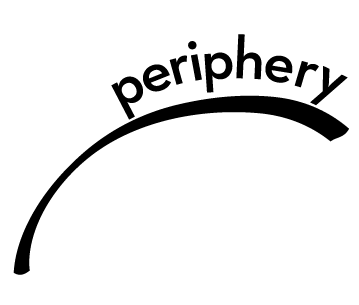Denny Moers | Within a Liminal Space
Original Monoprints
September 1 - November 1, 2020
Within a Liminal Space explores the tension between the known and the unknown. From the Latin root limen, meaning threshold, liminal is a transitional place separating the familiar from the unrecognizable. This area can be uncomfortable for many, but it is an area that artists know intimately. Whereas some photographers might anxiously move the paper in the chemical bath, anticipating the images they think will appear, Moers thrives in this space, embracing the process, accepting the uncertainty.
Looking at Moers's photographs as liminality, another word comes to mind – simultaneity. The hazy, mirage-like images in contrast with a hard edge of color, remind one of a past that can't quite come into focus while a future is sharply taking shape. Such as in Consumed Structure with Roadway III, Moers shows us a road that shines slick with color in the foreground while the trees and barn in the background blur in black and white as nature envelopes them. These images are intriguing and mysterious, full of meaning, waiting to be understood.
Biography
Denny Moers received his MFA from the Visual Studies Workshop. During the 1980’s he worked as Aaron Siskind’s first assistant and printer. He is currently on the faculty of Roger Williams University. He received a RI Pell Award for Excellence in the Arts and recipient of Rhode Island Council on the Arts Fellowship in Photography 4 times.
Publications include the portfolio: Between Now & Then- a selection of book covers, with a foreword by CD Wright published in 2006, In the Ultra- Silent Light, Monoprints by Denny Moers published by University of Buffalo, Anderson Gallery, 2003 and Denny Moers: Figments of a Landscape, published by Brown University, List Art Center in 1993.
His photographic monoprints are included in over 30 public collections throughout the world including the Los Angeles County Museum of Art, San Francisco Museum of Modern Art, Brooklyn Museum of Art, Baltimore Museum of Art, Huston Museum of Art, Bibliotheque Nationale, Paris, Museum of Fine Arts, Boston, Israel Museum in Jerusalem, High Museum of Art in Atlanta, and the Museo Rufino Tamayo, Mexico City.
For information about the artist and his work visit: www.dennymoers.com
~
…where we are betwixt and between the familiar in the completely unknown. There alone is our old world left behind, well we are not yet sure of the new existence. That’s a good space where genuine newness can begin. Get there often and stay as long as you can by whatever means possible… This is the secret space where the old world is able to fall apart, and a bigger world is revealed. If we don’t encounter liminal space in our lives, we start idealizing normalcy.
-Fr. Richard Rohr, OFM Author & Franciscan Friar
~
Excerpt from an interview between Barbara Owen and Denny Moers via email October 1, 2020
Barbara Owen: The title of your show “Within a Liminal Space” was influenced by your reading of the author and Franciscan Friar Richard Rohr, an excerpt of which you include in your writing at the show. Can you tell me why this excerpt was so important – what is it about the liminal that inspires you?
Denny Moers: I came upon the term when I was completing this new body of work through a website/blog I subscribe to written by Alan Seale, (Center for Transformational Presence.org). This quote below is his take on it which completely capsulized my feelings of the state all of us are currently in and crystalized the feelings of the pictures I was making.
“We’re living in a liminal space – a space where nothing is clearly defined, everything feels fluid, and the ground is constantly shifting. It’s a waiting space because we don’t know what else to do. There is a feeling of powerlessness. It can be very unsettling. And it’s not just a U.S. issue. Many countries have their own version of this story.
Choosing where we put our focus, whether as individuals, families, companies, or countries, is perhaps the most powerful choice we make. That choice determines everything else. Manifesting the resources, we need at just the right moment. These are valuable skills – skills that stretch our capacities for creativity, innovation, courage, and resilience. When we engage those capacities, we find our way forward.”
The concept of liminality was first developed in the early twentieth century by folklorist Arnold van Gennep. More recently, usage of the term has broadened to describe political and cultural change as well as rites.[5] During liminal periods of all kinds, social hierarchies may be reversed or temporarily dissolved, continuity of tradition may become uncertain, and future outcomes once taken for granted may be thrown into doubt.[6] The dissolution of order during liminality creates a fluid, malleable situation that enables new institutions and customs to become established. (From Wikipedia).
BO: The ten monoprints were created over the summer – however, some of the photographs were taken at an earlier time. Can you tell me a little bit about why you chose these photographs to manipulate in the darkroom for this show?
DM: My artwork is process-driven though the subject matter is central and always interior in nature. My prints are developed in stages due to different chemical configurations. That means that earlier prints that are achieved through light fogging, developer, and fixer applications need to be ‘finalized’ through a toning process which can occur months or even years later. Until that occurs, the monoprints are not finished and results are unknown. I can’t say exactly why I chose these particular prints for the exhibition except to say it occurred through the editing process which I have great respect for.
BO: Do you feel these images represent in any way the home isolation we all experienced and are still experiencing since the beginning of this year?
DM: Yes, completely. I think the state of mind I worked under is summed up through the concept of Liminal Space as described above.
BO: What is your most important artist tool? Is there something you can’t live without in your studio?
DM: Music to make art by. It is a deeply personal, lightless environment- perfect to connect feelings with particular music.
BO: How does your work relate to current social and political issues, if you think it does?
DM: Again, this notion occurs through Liminal thinking: “Various minority groups can be considered liminal. In reality illegal immigrants (present but not "official"), and stateless people, for example, are regarded as liminal because they are "betwixt and between home and host, part of society, but sometimes never fully integrated”. Intersex or transgender people, bisexual people in most contemporary societies, people of mixed ethnicity, and those accused but not yet judged guilty or not guilty, are liminal. Teenagers, being neither children nor adults, are liminal people: indeed, "for young people, liminality of this kind has become a permanent phenomenon...Postmodern liminality". (From Wikipedia citation).
BO: How has your practice changed over time?
DM: Mostly through the relationship with the concept of accident in artmaking being embraced and not feared. The subject matter has evolved in different ways but always with a sense of my photographs coming from a world available to everyone, not contrived or made in a studio.
BO: In your notes on process and techniques, you talk about how you create variations of tone that are inherent in the black and whites by using silver chloride paper. And although the prints may look hand-colored, any colors are created using metal toners such as gold chloride, selenium, and sulfide – you are not wholly in control when you are working. Could it be described as a learned “uncontrol?”
DM: Yes, an embracing of accident over control with a dose of joy in that realization.
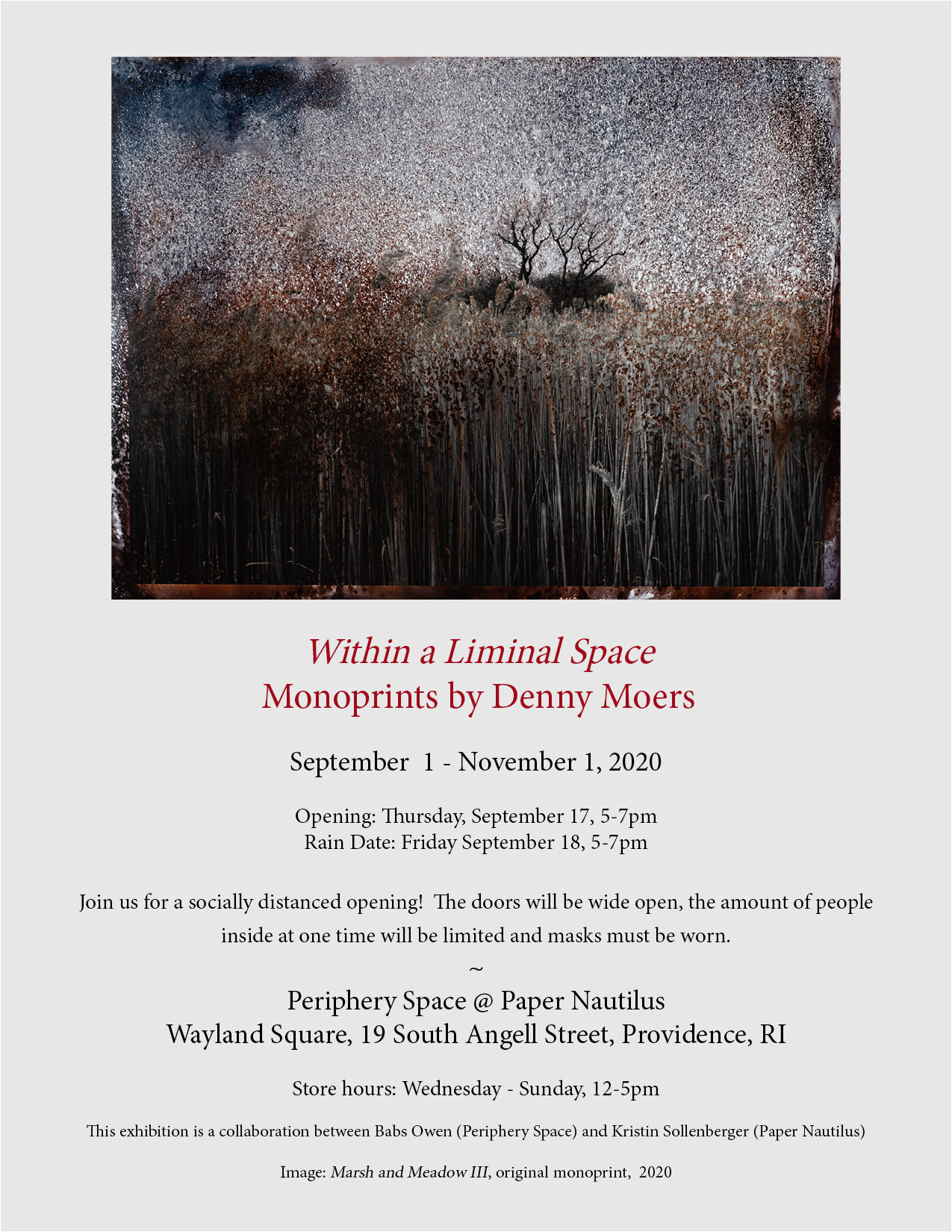
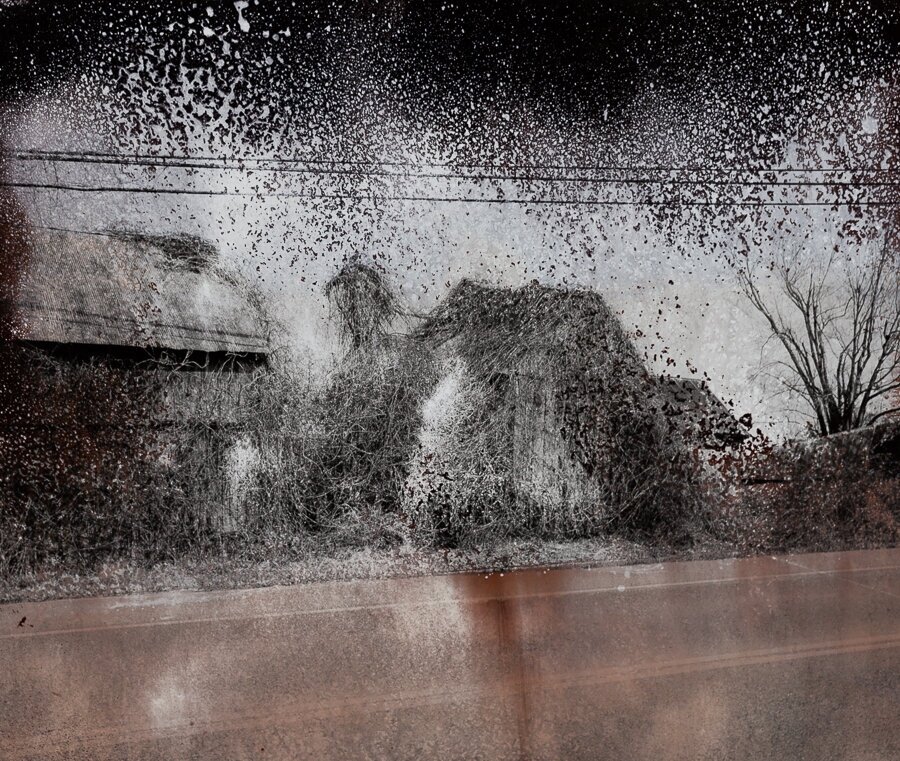
"Consumed Structure with Roadway III", 2020
original monoprint, 20 x 24 in.

"Large Rock in Receding Tide", 2020
original monoprint, 20 x 24 in.

"Dam in Transition V", 2020
original monoprint, 20 x 24 in.

"Redwood Grove VI", 2020
original monoprint, 20 x 24 in.

"Tree in Salt Marsh I", 2020
original monoprint, 24 x 20 in.

"Marsh & Meadow II", 2020
original monoprint, 20 x 24 in.

"Cabin Under Blue Sky II", 2020
original monoprint, 24 x 20 in. SOLD

"Tree Emanations IV", 2020
original monoprint, 20 x 24 in.

"Tree Emanations III", 2020
original monoprint, 16 x 20 in.

"Marsh & Meadow III", 2020
original monoprint, 20 x 24 in.
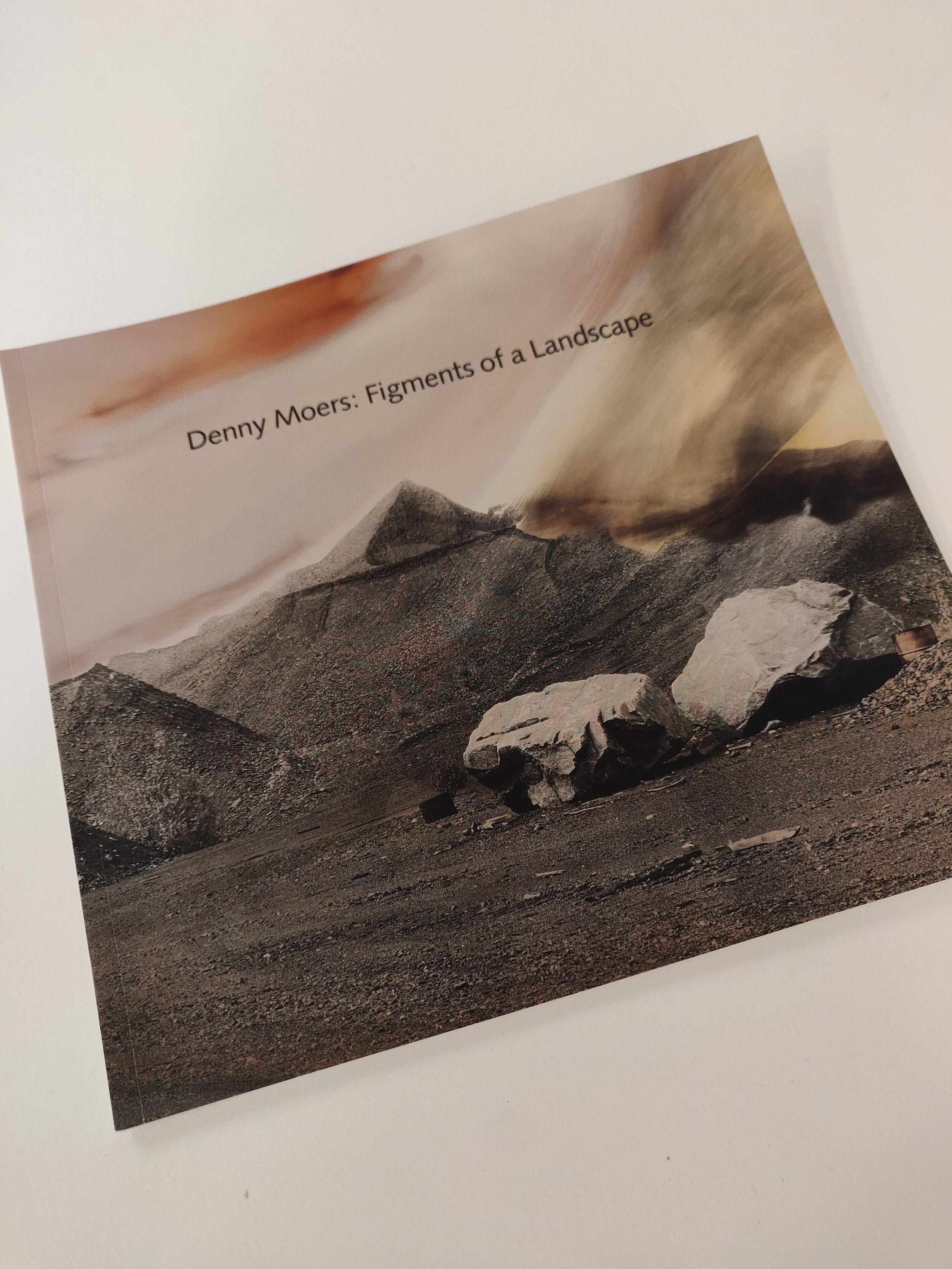
artist catalog
$20

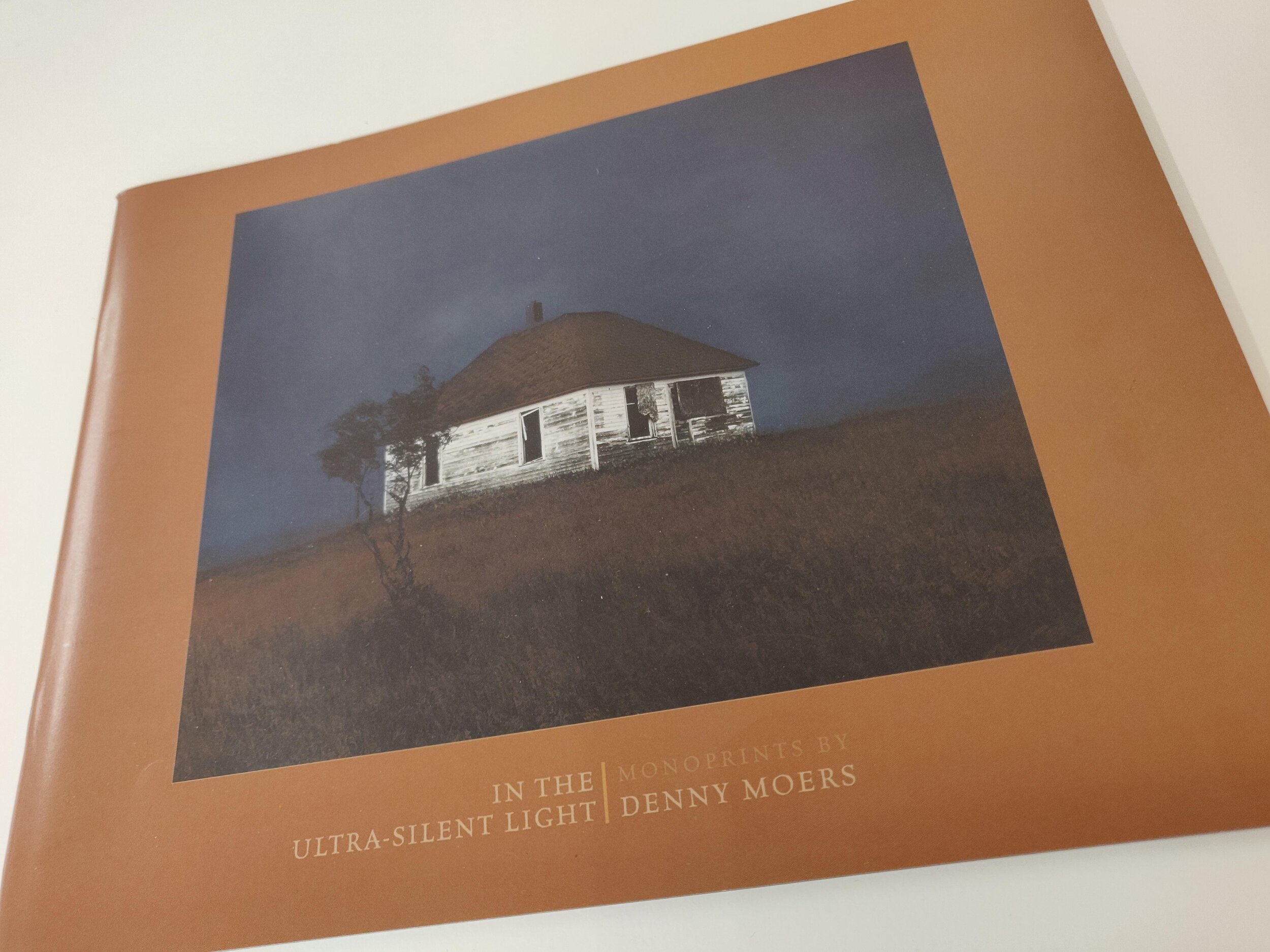
Artist catalog
$20
